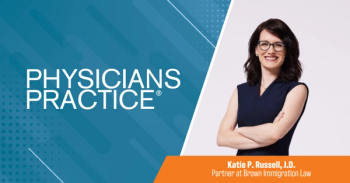
Healthcare data sharing needs a major overhaul
The healthcare ecosystem exhibits a clear void in efficient data and file sharing technology
Across all sectors of the healthcare ecosystem, there’s dire need for a technological advancement to improve data sharing. If any event displays this disparity in the healthcare system so clearly, it’s COVID-19.
Researchers have called out the challenges public health agencies face accessing disparate data from key participants in the pandemic’s management. But it’s not just a problem amidst coronavirus—it’s an issue across the board, even in our most mundane days on the job.
Every corner of the field—from physicians’ private practices to large medical groups, inpatient to outpatient care, genomics, labs, health plans, and beyond—exhibits a clear void in efficient data and file sharing technology. For example, today, a patient is often required to physically pick up a CD/DVD from their radiologist to share their records with the specialist. Not only does this old process cause a delay in patient care but also continues the path of fragmented care.
With the
HIPAA requirements pose a necessary hurdle for what technology can be implemented, but compliant solutions exist that can be applied right now. With so much change and progress occurring in medicine, health and wellness, our use of technology must follow suit, so we can better share research, resources, patient data and other vital information in a more efficient and effective way.
Beyond the CURES Act requirements, improved file sharing is critical for enabling physicians to empower their patients’ engagement. Safely and securely transferring data for imaging and rich-media files can be expedited, claims data can be streamlined between payers and providers, and research centers can be enriched by enhanced IOP.
One glaring element of caution to consider when implementing any new software application is “the cloud.” This ambiguous data storage experiment is riddled with security breaches, data leaks and potential risks that may expose confidential information or result in a total loss of files, especially if no backup is available. When sharing files over cloud-based tools, you’re essentially relying on a vulnerable third party to pass your data along. Furthermore Accurics, a cloud-computing security firm, found that
There’s also a need for better mapping on the back end of healthcare computer networks, which is an issue in the hands of many EHR systems. Almost all healthcare environments have been structured uniquely from one another, often making it difficult to effectively transfer files within their own healthcare networks. It’s up to EHRs to create solutions that improve these workflows, particularly with interoperability, so file sharing solutions can work seamlessly on day one.
With such disparate systems in place, the technology advancement healthcare workers desperately need may not seem like a simple task on the surface, but it can and should happen sooner rather than later. Proper efforts to strategize with IT teams and organizational leadership can result in significant improvements when better data sharing technology is implemented.
This is an evolution that can arrive now, at low costs, with minimal training needed. It’s time the healthcare industry stepped into the future to meet the standards of today’s patients and the rest of the working world.
About the Author
David Lee is a seasoned healthcare executive with private and non-profit enterprise experience in medical group practice management, serves as CEO of D&L Health Solutions and advisor to
Newsletter
Optimize your practice with the Physicians Practice newsletter, offering management pearls, leadership tips, and business strategies tailored for practice administrators and physicians of any specialty.









